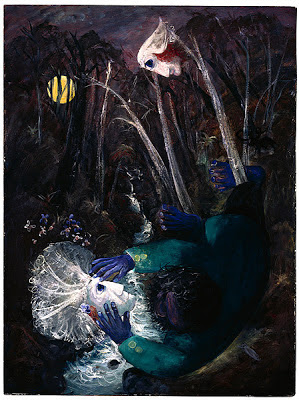Tonight I got some good shots. This creature can't stay, and I already have a trap set, and a neighbour primed for the dispatching job, but it's a pity these appealing marsupials were ever introduced into New Zealand. In Australian their enemies are dingoes, the vegetation is far less palatable, and bush fires are a regulator. Here in New Zealand they have no natural enemies, and they have had a devastating impact on the ecosystems. They do much damage to the bush, not to mention the native bird population (eating both eggs and young). Around my property we have More-pork, silvereyes, fantails, tui, and even the occasional kaka and kereru, quite aside from all the imported finches, blackbirds and thrushes etc. It has to go.
This one seems remarkably tame, and took very little notice of me getting the outside chair for a good view.
Perhaps it knows my smell and my voice. In fact that's certain: it sleeps in the ceiling space above my bedroom, returning about 5.30am. This morning I found myself shouting 'Go to SLEEP why don't you!' as it shuffled and turned and wriggled around finding a comfortable spot amongst the insulation up there.
 |
| An Australian brush-tailed possum on my New Zealand studio roof. |
I think these critters are quite rare in Aussie. I wonder if we could ship a whole lot back to them. We've got plenty!
Incidentally, the clouds looked wonderful tonight with the moon behind them...
---------------------
Sorry folks. Comments for this particular post are closed due to the volume of annoying visits by roofing companies. But please feel welcome to comment on any other post!


















































